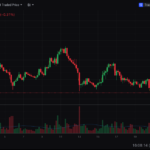In the fast-paced world of trading, where headlines often emphasize short-term gains, long-term position trading offers a more measured, strategic approach. This strategy is perfect for traders who prefer to ride macro trends and invest with patience, leveraging the power of time to maximize returns.
What is Long-Term Position Trading?
Long-term position trading involves holding assets for weeks, months, or even years to capitalize on sustained market trends. Unlike day trading or swing trading, this strategy focuses on broader market movements and is often used by traders with a deep understanding of market cycles and fundamentals
Core Principles of Long-Term Position Trading
- Trend Following: Identifying and riding prolonged market trends is key. Long-term traders typically focus on assets with strong upward or downward trajectories.
- Fundamental Analysis: In-depth research into an asset’s intrinsic value, industry outlook, and macroeconomic factors plays a crucial role.
- Patience and Discipline: Long-term position trading requires the ability to stay committed through market volatility, avoiding impulsive decisions.
Advantages of Long-Term Position Trading
- Reduced Stress: Fewer trades mean less need to monitor the market constantly.
- Lower Costs: Minimal transaction fees and reduced tax implications compared to frequent trading.
- Potential for Higher Returns: Capturing large price movements over time can lead to significant gains.
Key Strategies for Long-Term Position Trading
1. Fundamental Strength
Select assets with strong financial health and growth potential. For stocks, this might involve analyzing revenue, earnings, and market positioning. For cryptocurrencies, focus on adoption rates, technology, and community support.
2. Technical Confirmation
Use technical analysis to validate entry and exit points. Indicators like Moving Averages, Relative Strength Index (RSI), and Fibonacci retracements can help confirm long-term trends.
3. Diversification
Spread your investments across different asset classes or sectors to mitigate risks. Diversification can protect your portfolio during sector-specific downturns.
4. Risk Management
- Set stop-loss orders to limit potential losses.
- Regularly reassess your positions to ensure they align with market conditions and your financial goals.
5. Macroeconomic Trends
Monitor global economic indicators such as interest rates, inflation, and geopolitical events. These factors can significantly impact long-term price trends.
Common Pitfalls to Avoid
- Ignoring Fundamentals: Focusing solely on price without considering underlying value can lead to poor investment decisions.
- Overreacting to Short-Term Volatility: Long-term traders must resist the urge to exit positions prematurely due to market noise.
- Neglecting Re-Evaluation: Periodically review your portfolio to ensure it aligns with your original thesis.
Examples of Long-Term Position Trading
- Stock Market: Investing in blue-chip companies like Apple or Microsoft for their consistent growth and strong fundamentals.
- Cryptocurrency: Holding Bitcoin or Ethereum through market cycles, banking on their long-term adoption and utility.
- Commodities: Investing in gold or crude oil during periods of economic uncertainty.
Who Should Consider Long-Term Position Trading?
This strategy suits traders and investors who:
- Have a low tolerance for frequent trading.
- Prefer to focus on macro trends rather than daily fluctuations.
- Are comfortable with holding assets for extended periods to achieve their financial goals.
Conclusion
Long-term position trading is a disciplined, patient approach that aligns well with traders who seek to capitalize on macro trends and avoid the stress of frequent trading. By focusing on fundamentals, diversifying investments, and maintaining a long-term perspective, you can build a robust trading strategy designed to weather market volatility and deliver sustainable returns.
Disclaimer: This article is for informational purposes only and does not constitute financial advice. Always conduct thorough research before making trading decisions.







